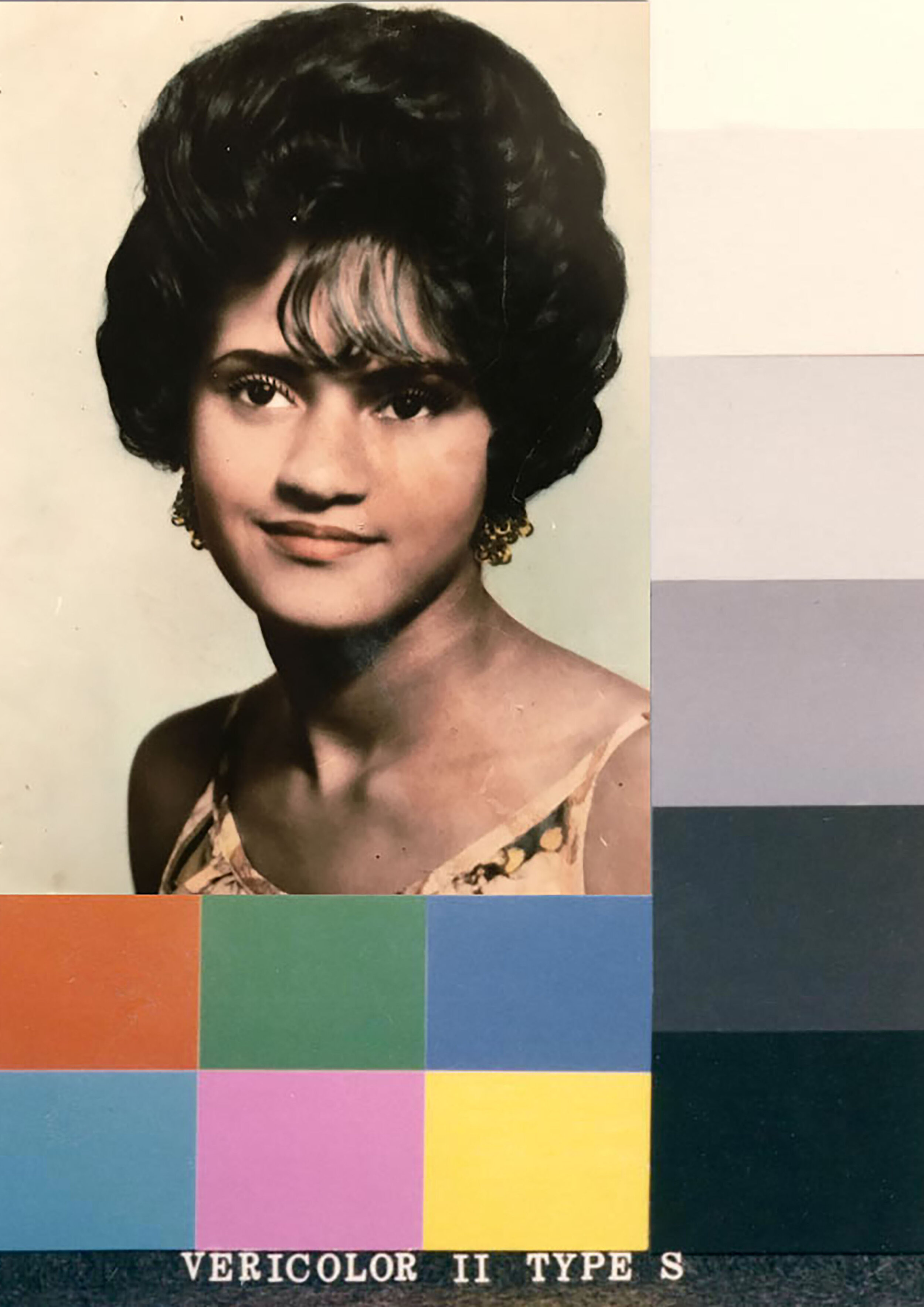Triggered: Terrence Phearse
By: Terrence Phearse
Beginning in the mid-1940s, a Shirley Card was used by photo labs to calibrate skin tones, shadows, and lighting during the print process which used white models as the standard. One of the first studio models for Kodak was named Shirley. The range of film emulsions was calibrated for white skin and had limited sensitivity to brown, red or yellow skin tones. For many decades, chemicals that would bring out these colors were largely left out. To color match “Shirley’s” skin tone was to achieve a “normal” color balance, a setting that was applied to everyone’s film, regardless of their skin color.
This is a studio portrait of my Grandmother Connie. I used her photograph as a conduit to post photographic discourse by removing the white Shirley model and replacing it with her muddied skin tone photograph that was lost in the printing process. I grew up seeing this photograph every day in my parent’s home, but I did not realize the inadequacy until I began doing research on Kodak’s printing processes. Other photographs in this series, I used Kodak advertisements and placed them over her face.








